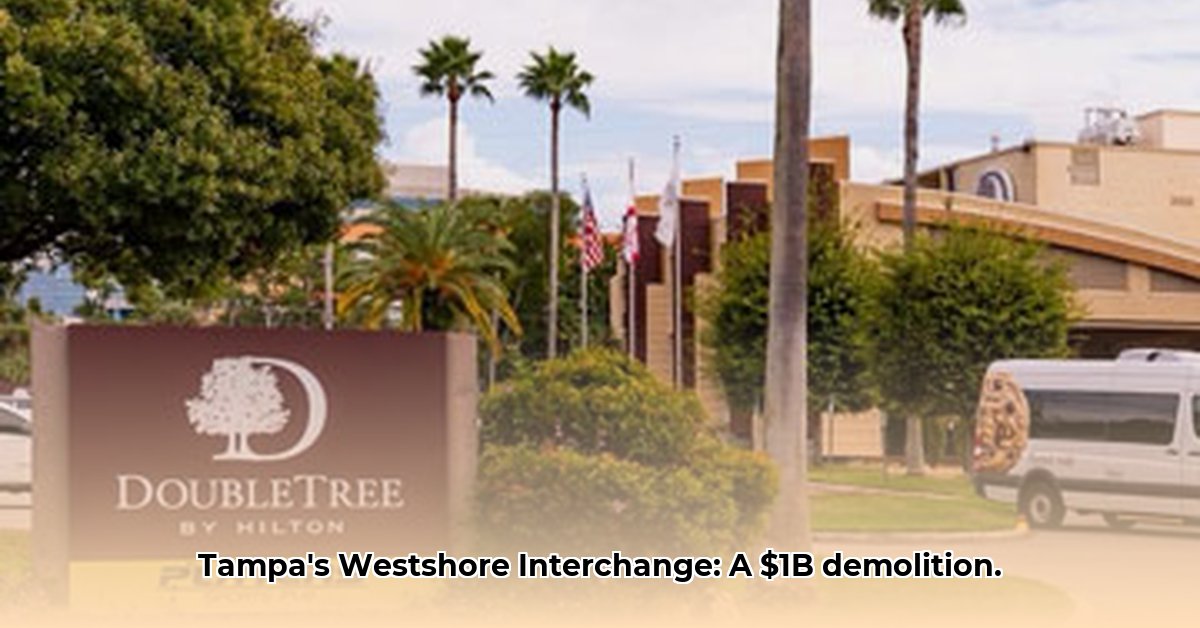
The Westshore Interchange: Reshaping Tampa's Transportation Future
The recent implosion of the DoubleTree hotel on Cypress Street marked the official commencement of Tampa's transformative $1 billion Westshore Interchange project. This ambitious undertaking, spanning a decade, aims to significantly overhaul Tampa's transportation network, impacting everything from daily commutes to long-term economic growth. Will this massive investment deliver on its promise? The answer lies in navigating both the anticipated benefits and the unavoidable challenges of such a large-scale endeavor.
A Network Overhaul: What the Project Entails
Tampa's rapid growth has strained its existing infrastructure, leading to chronic traffic congestion. The Westshore Interchange directly addresses this issue. The project's primary goal is to streamline connections between Tampa International Airport (TIA), the downtown core, and major highways, acting as a crucial upgrade to the city's transportation arteries.
Key improvements include dedicated express lanes directly to TIA, enhancing airport accessibility. Drivers will also benefit from improved access to the Courtney Campbell Causeway, Independence Parkway, and the Veteran's Expressway. A new flyover from the Howard Frankland Bridge and substantial I-275 reconfigurations are also planned. This level of infrastructure change promises to fundamentally alter traffic flow in a vital area of the city. How will this impact commuters' daily routines? That's a critically important question.
Beyond Traffic: The Broader Economic Impact
The Westshore Interchange is more than just roadwork; it represents a significant investment in Tampa's future. Improved transportation makes the city more attractive to businesses, potentially stimulating job growth and economic expansion. Increased accessibility to TIA also promises a boost to tourism, making Tampa a more convenient and desirable destination. But how will these projected benefits balance against the inevitable disruptions during construction?
Confronting Challenges: Potential Roadblocks and Mitigation
A ten-year timeline inherently presents challenges. Unforeseen delays due to permitting issues, material shortages, or the discovery of unexpected underground utilities are all real possibilities—familiar obstacles in large-scale construction projects. Considering the current global climate, what are the chances of significant material delays impacting the project timeline?
Critically, the Florida Department of Transportation (FDOT) must effectively manage disruptions to local businesses and residents. This requires meticulous planning and proactive communication to maintain community engagement and understanding throughout the construction process. Will their communication strategy effectively alleviate concerns during this long-term project?
Transparency and Engagement: A Critical Component
The demolition of the DoubleTree underscored the project's impact on the immediate community. The FDOT's success hinges on maintaining transparent communication, addressing concerns promptly, and building trust. This is more than just a public relations endeavor; it is essential for ensuring community cooperation during the inevitable inconveniences of a prolonged construction phase. How will the FDOT ensure effective communication and minimize community disruption?
A Balanced Perspective: Weighing Potential Benefits and Drawbacks
The Westshore Interchange project offers a complex picture of potential benefits and drawbacks.
- Potential Upsides: Reduced commute times, enhanced airport access, improved traffic flow, increased business attraction, job creation, tourism boost, and property value appreciation.
- Potential Downsides: Significant traffic delays during construction, potential cost overruns and schedule delays, business disruption, potential temporary decline in property values, and construction-related noise and inconvenience.
The demolition of the DoubleTree serves as a symbolic beginning for a project of significant scale and ambition. The Westshore Interchange aims to fundamentally reshape Tampa's infrastructure, promising a drastically improved transportation network. However, its ultimate success rests on the FDOT's ability to navigate the inherent challenges, maintain transparent communication, and effectively mitigate disruptions to the community. Only time will tell whether the ambitious vision of a better-connected Tampa will fully materialize.